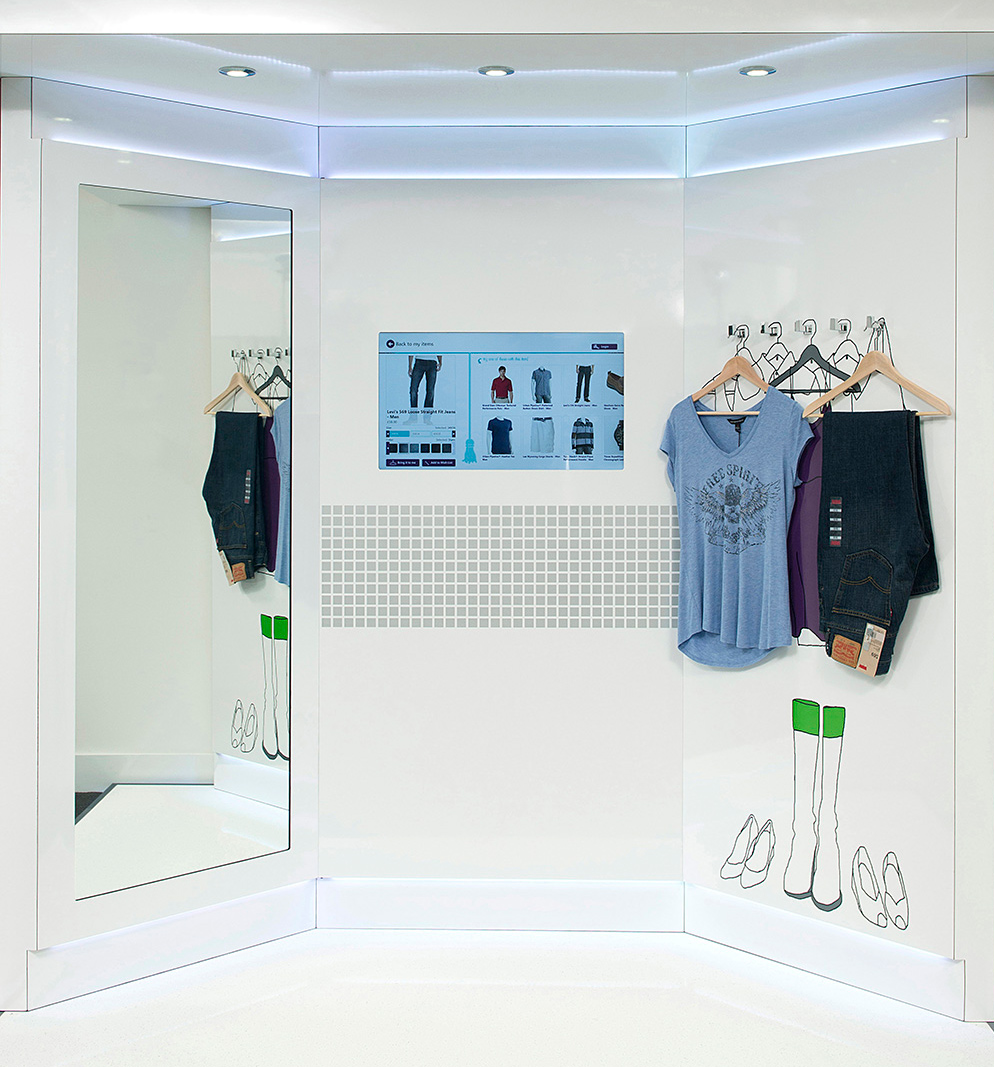There are big changes coming to the retail world. Indoor malls are struggling to survive. Space that was once premium is becoming costly and of little benefit to the those that inhabit them. The retail model for the future won’t be able to compete directly with online stores in price, so value added services and convenience will be the ultimate drivers for shoppers to buy in person at any brick and mortar retail outlet. Microsoft and Accenture have created a prototype for a Smart Fitting Room concept, while consulting industry leader McKinsey & Company have provide insight on how the smart store of the future can benefit retailers.
Fast Company’s online design section gave us a glimpse of Microsoft and Accenture’s connected fitting room. The fitting room is connected to items in the store using RFID technology.

When a shopper walks into a fitting room, a digital screen shows them the items that they have picked out and shows them the size options and makes suggestions of other things that shopper may like. With the click of a button, a shopper can order a different size, color, or item to try on without having to leave the fitting room. This convenience alone will increase sales, but as well as provide excellent data to the stores that employ these systems.
Using this new data, a store can more easily track inventory, have a feel for how many items a person typically tries on, and even how long someone typically takes to try on items in a visit to a dressing room. Stores will be able to make decisions about how many dressing rooms are needed, how much space is needed for clothing hangers, and even how pegs for hangers are needed. The RFID tags will allow stores to know what routes are the most common while looking for clothing to make sure that stores have the best layouts possible and can strategically organize items around the store based on this information. In the future, these dressing rooms can be used as a substitute for the cash register.
Despite competing with Accenture, McKinsey & Company project retail the same way. They provide information on their projections and give advice in their most recent Quarterly Insight in an article titled Digitizing the Consumer Decision Journey. The piece is by three of McKinsey’s Principal consultants, Edwin van Bommel, David Edelman, and Kelly Ungerman. They describe the rapid changes in technology in retail and how a cross channel experience can change the way shopping feels to a customer. In the article, they describe a couple that has bought its first home that needs to buy a washer and dryer. The couple decides to utilize the websites of several big box stores before going to one with a saved shopping list on one of the store’s website. When they enter the store, the process of ordering the item is not only as simple as it would be if purchased online, but also provides the convenience of being able to see, touch, and measure the item.
The couple can use Google Maps to navigate to the store. Transmitters much like the RFID tags used in the system being developed by Accenture and Microsoft, are installed near the entrance to the store. These are set up to recognize the information for the couple and send them personalized offers as well as provide directions inside the store to locate the items they are interested in. If the couple has particular history, it may provide additional offers related to previous purchases or even specifically target a sale. Payment and scheduling delivery can all be done electronically without having to take out a wallet. Notification for delivery can be set with in a thirty minute period so customers won’t be stuck waiting at home all day.
Companies need to start thinking about how they can make their stores more efficient and the data of the store of the future provides bright possibilities. Better knowledge of your customer base, whether you are selling organic vegetables, clothing, or electronics will help to cut down on excess inventory and help create greater margins for retailers. To make this happen, investment in people with non-traditional backgrounds from the norm in retail will be critical. Experts in data mining, statistics, and supply chain will be crucial to being effectively using newly gathered customer data. The value added service of having the right items at the right time is the only thing that will keep retailers competitive against online retailers like Amazon. Retailers have to re-invent their showrooms and understand that customers start shopping far before they open the door to the store.